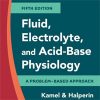Management of late onset urea cycle disorders-a remaining challenge for the intensivist?
pubmed.ncbi.nlm.nih.govAwareness of urea cycle disorders in adults intensive care units can optimize early management and accordingly dramatically improve prognosis. By preventing hyperammonemia to induce brain edema and herniation leading to death.
Hyperammonemia caused by a disorder of the urea cycle is a rare cause of metabolic encephalopathy that may be underdiagnosed by the adult intensivists because of its rarity. Urea cycle disorders are autosomal recessive diseases except for ornithine transcarbamylase deficiency (OTCD) that is X-linked.
Optimal treatment is crucial to improve prognosis. Main body We systematically reviewed cases reported in the literature on hyperammonemia in adulthood.
We used the US National Library of Medicine Pubmed search engine since 2009.
The two main causes are ornithine transcarbamylase deficiency followed by type II citrullinemia.
Diagnosis by the intensivist remains very challenging therefore delaying treatment and putting patients at risk of fatal cerebral edema. Treatment consists in adapted nutrition, scavenging agents and dialysis.
As adults are more susceptible to hyperammonemia, emergent hemodialysis is mandatory before referral to a reference center if ammonia levels are above 200 µmol/l as the risk of cerebral edema is then above 55%. Definitive therapy in urea cycle abnormalities is liver transplantation.

















